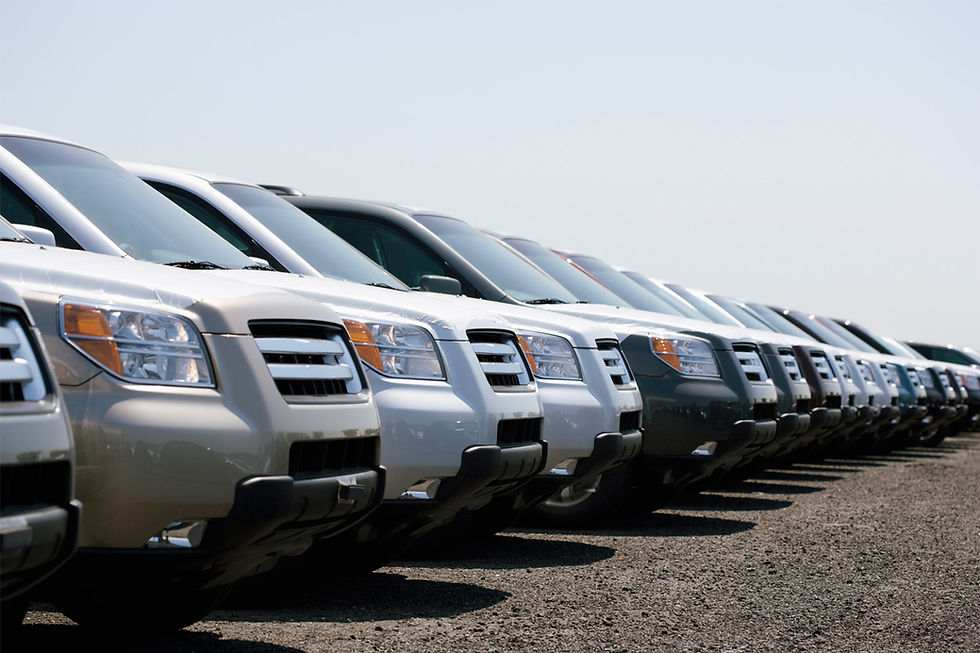Car Safety Features
- Automobile Safety
- Jan 23, 2019
- 4 min read

When considering a new automobile purchase or lease, safety features are top of mind, especially for families. Mercedes-Benz, Audi, and BMW C-Class sedans have comparable pricing in the $31000 to $65500 range, and similar safety features. The top three automobile safety features for C-Class sedans are airbags, brake systems, and seat belts. For Mercedes-Benz India, Audi, and BMW sedans, all in the same MSRP range, the three models are similar on these safety features with a couple of notable exceptions.
MSRP Price Range $32900 to $55300
The Mercedes-Benz has 6 driver and passenger airbags, 4 wheel anti-lock braking system, Neck-Pro crash-responsive head restraints, 3-point driver and front passenger shoulder belts, including height adjustment, emergency tensioning, adaptive belt force limiter, rear 3-point seat belts, including outboard emergency tensioning, outboard belt force limiter, and outboard automatic height.
MSRP Price Range $31000 to $58000
The Audi has driver, passenger, side head, and rear head air bags, passenger airbag on/off switch, traction control, front 3-point seat belts, including auto pretensioners and belt force limiters, and rear 3-point seat belts with auto pretensioners. MSRP Price Range $33600 to $66500 The BMW has driver, passenger, side head, and rear head air bags, passenger airbag on/off switch, 4 wheel ABS, traction control, brake assist, all-position 3-point safety belts, including front pretensioners, ALR in all passenger positions, and latch attachments for rear seats.
While all three models have 3-point seat belts, the Audi does not have 4 wheel anti-lock braking system as do the other two, and both the Audi and BMW have head airbags where the Mercedes has airbags and crash-responsive head restraints. Although not protecting as wide an area as curtain airbags, head airbags do offer extra protection during crashes by deploying between the head and window, but head restraints are reusable and can be reset after being deployed. Anti-lock brake systems provide extra control and improved safety in difficult braking situations.
Mercedes-Benz offers a reusable head protection feature that protects head, neck, and spine in the event of a crash, as well as airbags, a 4 wheel anti-lock braking system, and 3-point safety belts for driver and passenger protection. For the price range it falls into, Mercedes-Benz offers the added value of a unique standard safety feature not offered in other similar c-class sedans, even higher-priced models. When considering c-class sedan style, price, performance, and safety, the Mercedes-Benz provides a safety advantage to drivers and passengers.
Technology has become a central part in our daily lives. In this new era of technology people are learning to adapt to the newest advancements much more quickly, this applies to both consumers and producers. In the automobile industry advancements are being made to improve our every day lives and futures, for example environmentally friendly vehicles are being produced more and more over the last couple years and there have been increases in technology based safety features in cars.
Safety has always been an important aspect when you select a vehicle, however, with new advances such as crash-avoidance systems, adaptive cruise control, and self-parking technology we may be getting closer to a time where car accidents will no longer be a big worry while you are out on the road. Whether this kind of future may ever be obtainable is up for debate, but with the rate at which improvements are happening lately the idea is no longer an impossibility. There remains one question from these steps forward; what does this mean for consumers and insurance rates?
First of all, we should look at some numbers. Have the advancements in driving safety really decreased car crashes? During 2008 to 2009 roadway fatalities decreased noticeably. The initial thoughts behind the decrease was the assumption that it was all due to there being less drivers on the road during those years as a result of the failing economical situation. However, when specialists took a closer look at the data the origin of the decrease was revealed to be the recent improvements in automobile safety features. These features include forward collision, lane-departure, and even blind-spot warning systems. Having safety features such as this are already making it easier to obtain much more inexpensive auto insurance. If accidents continue to decrease, overtime it is possible that insurance prices will go down as a whole.
Some people are arguing this ideal, however. Even though we may be getting closer to developing cars that communicate with each other on the road, there are various speed bumps that will have to be faced along the road if a completely accident free future is to occur. The most prominent is issue is the fact that even if all new cars are being updated with that type of technology there are still over 250 million cars without the technology on the road, not to mention government issued vehicles will have to be integrated with this sort of technology.
Low cost auto insurance may happen, but the need of auto insurance will always remain. After all, insurance does not only cover accidents, it also serves to cover expenses caused from the weather and theft.







Comments